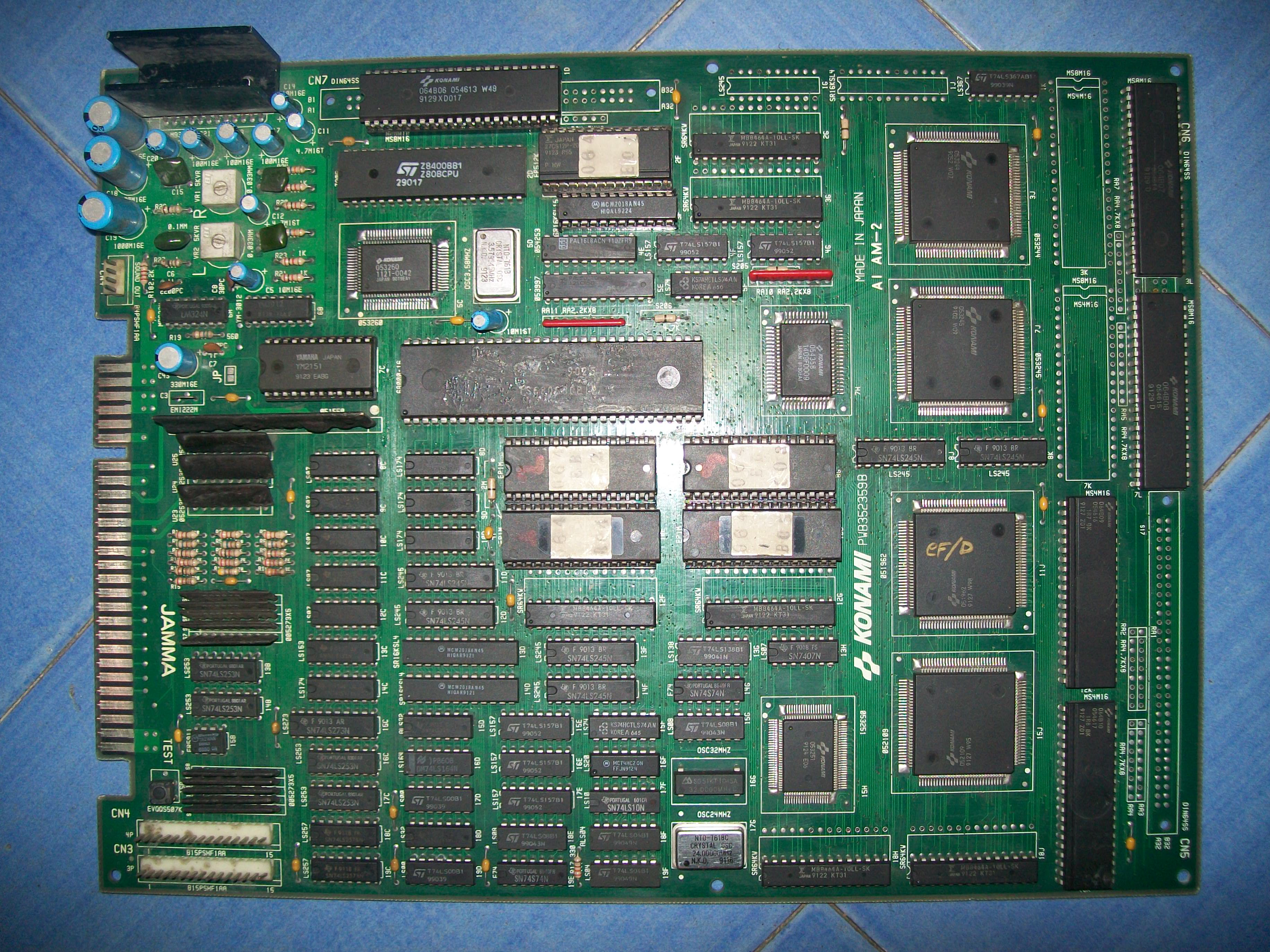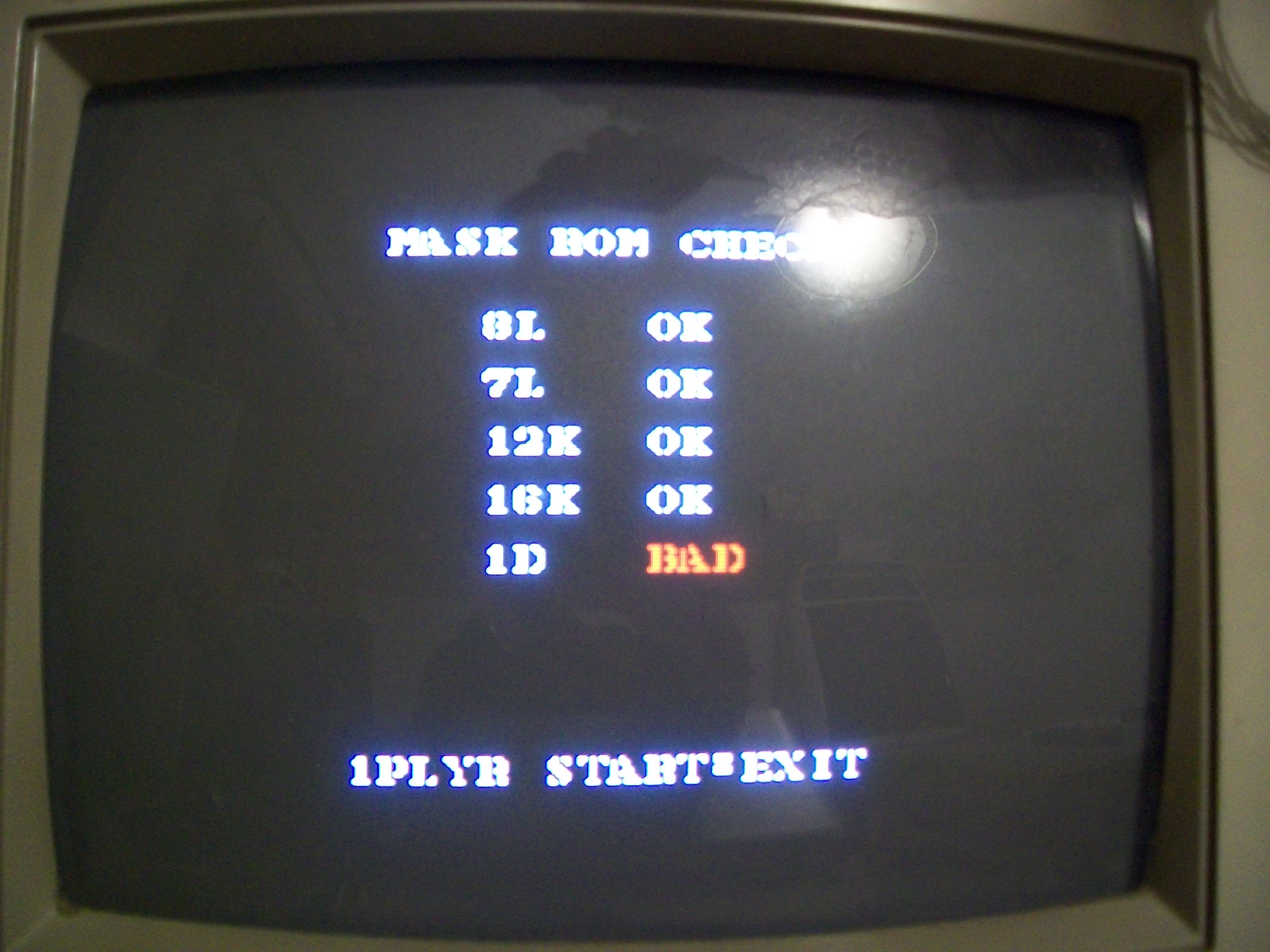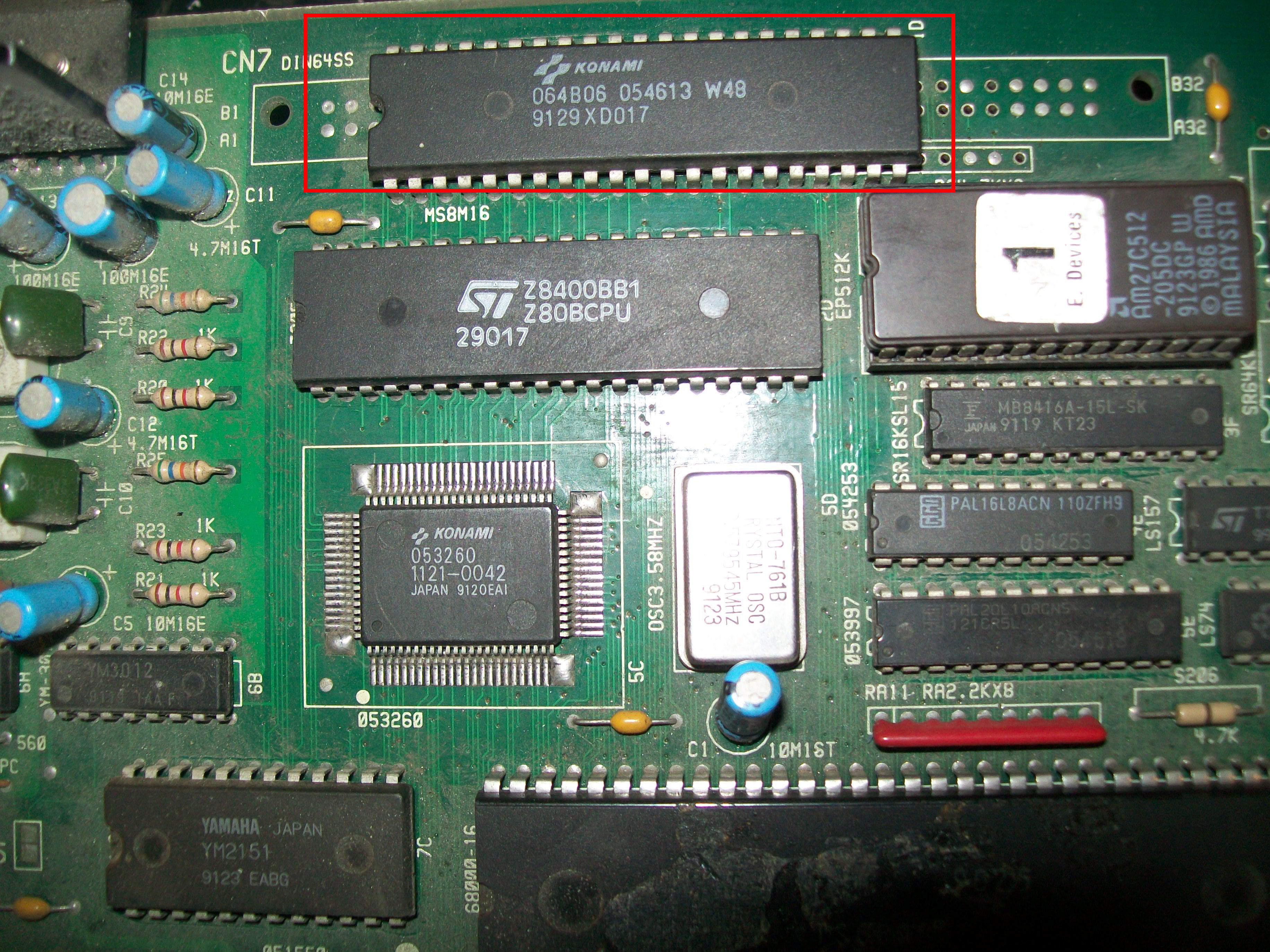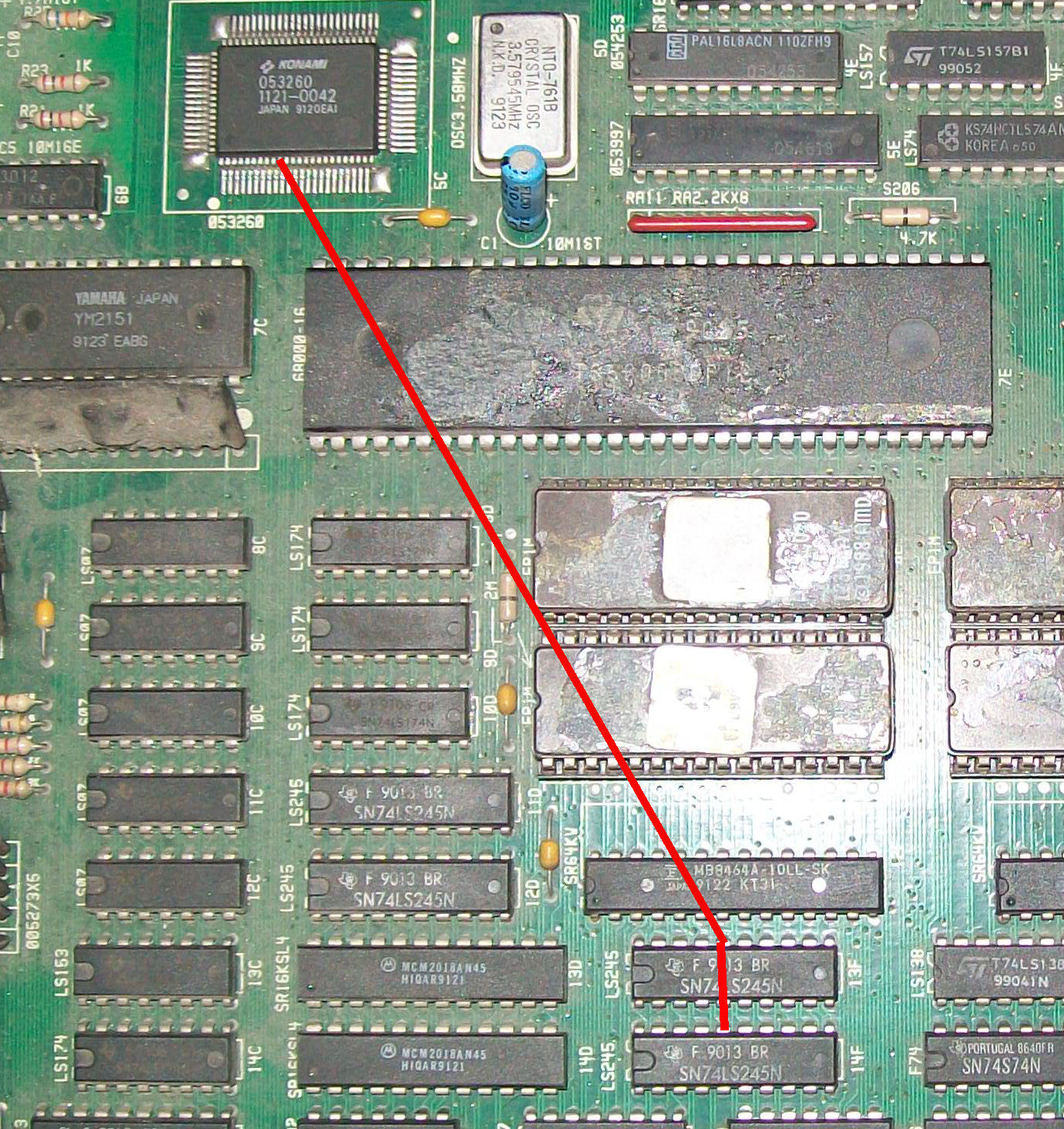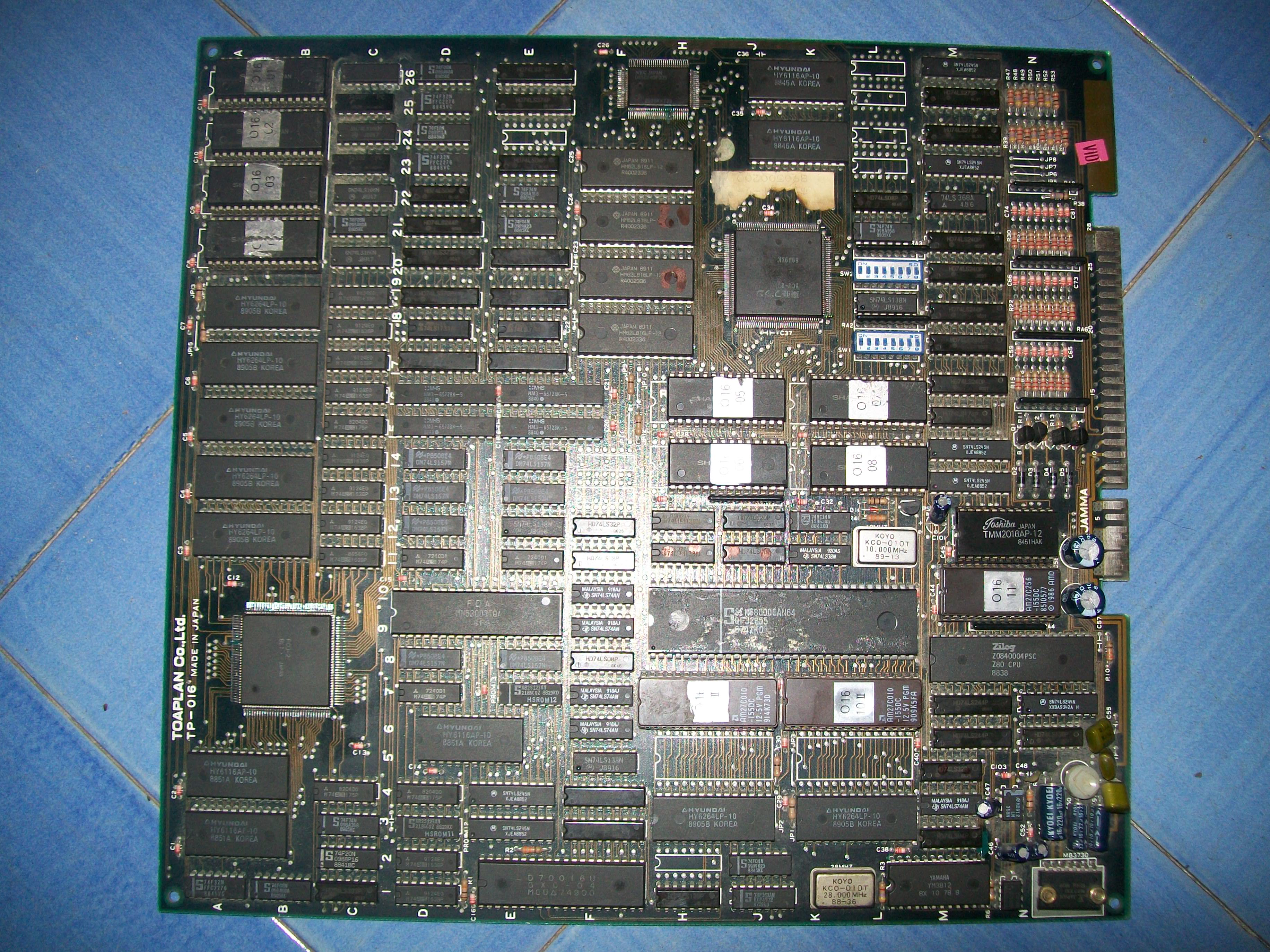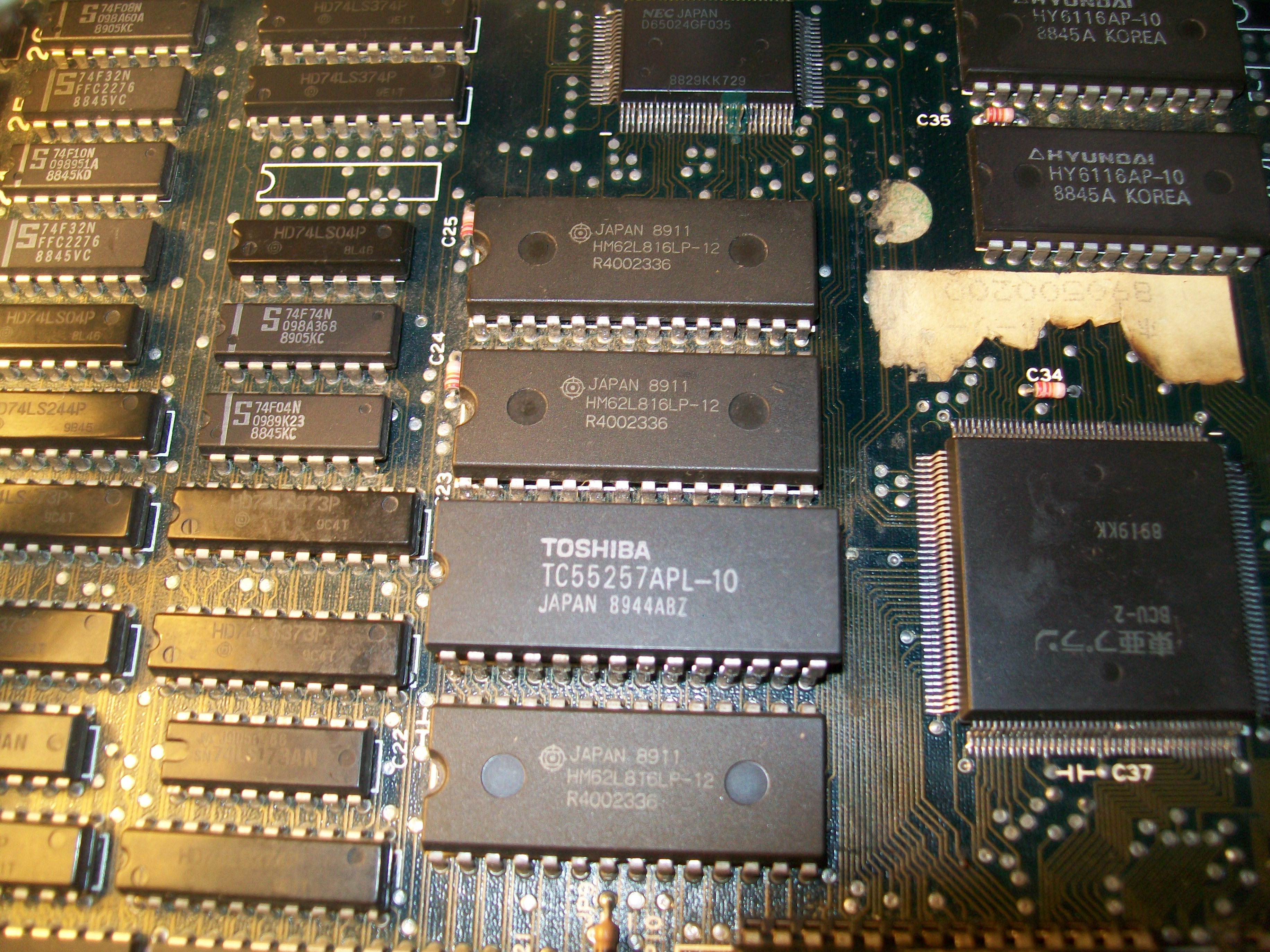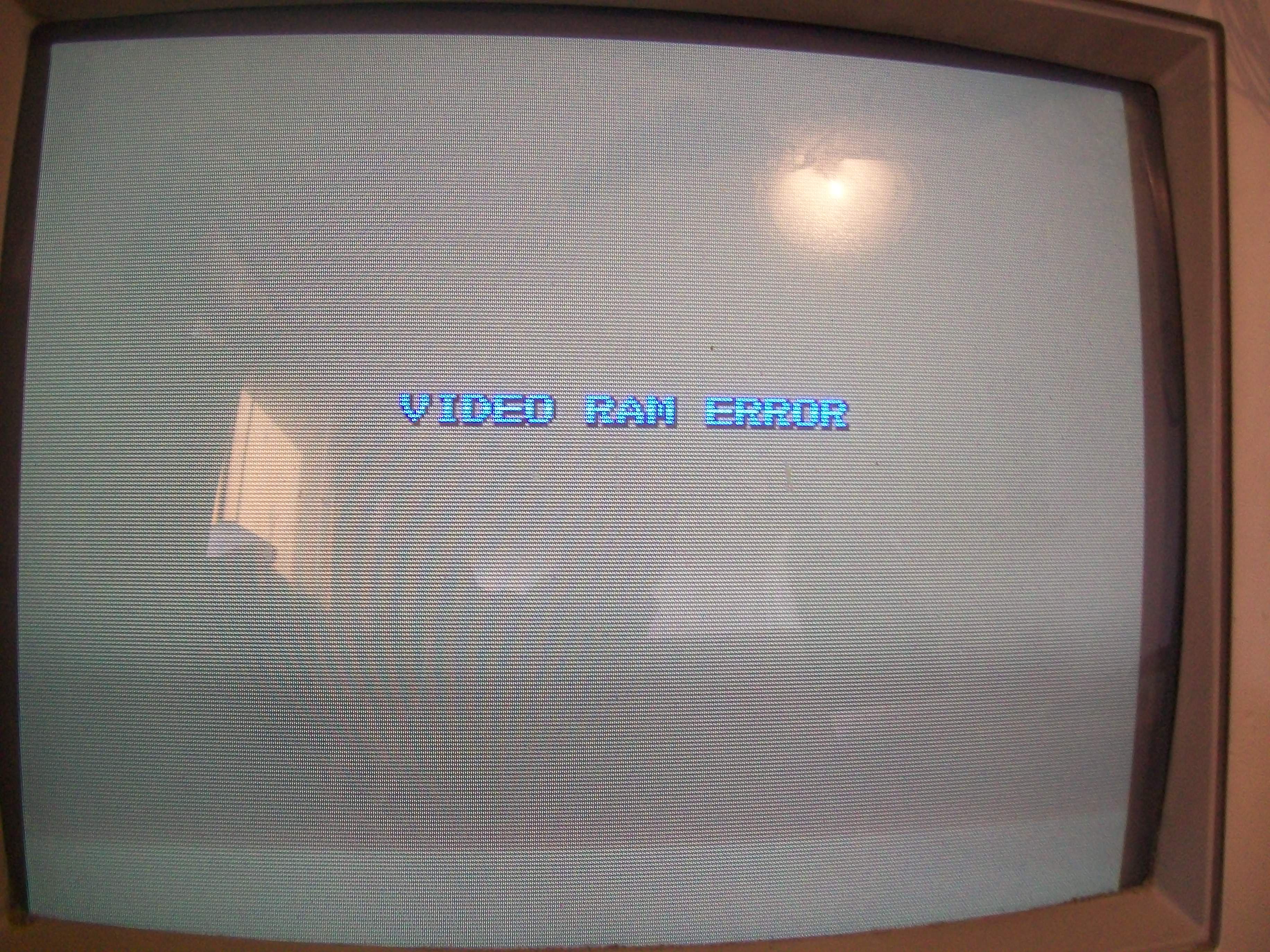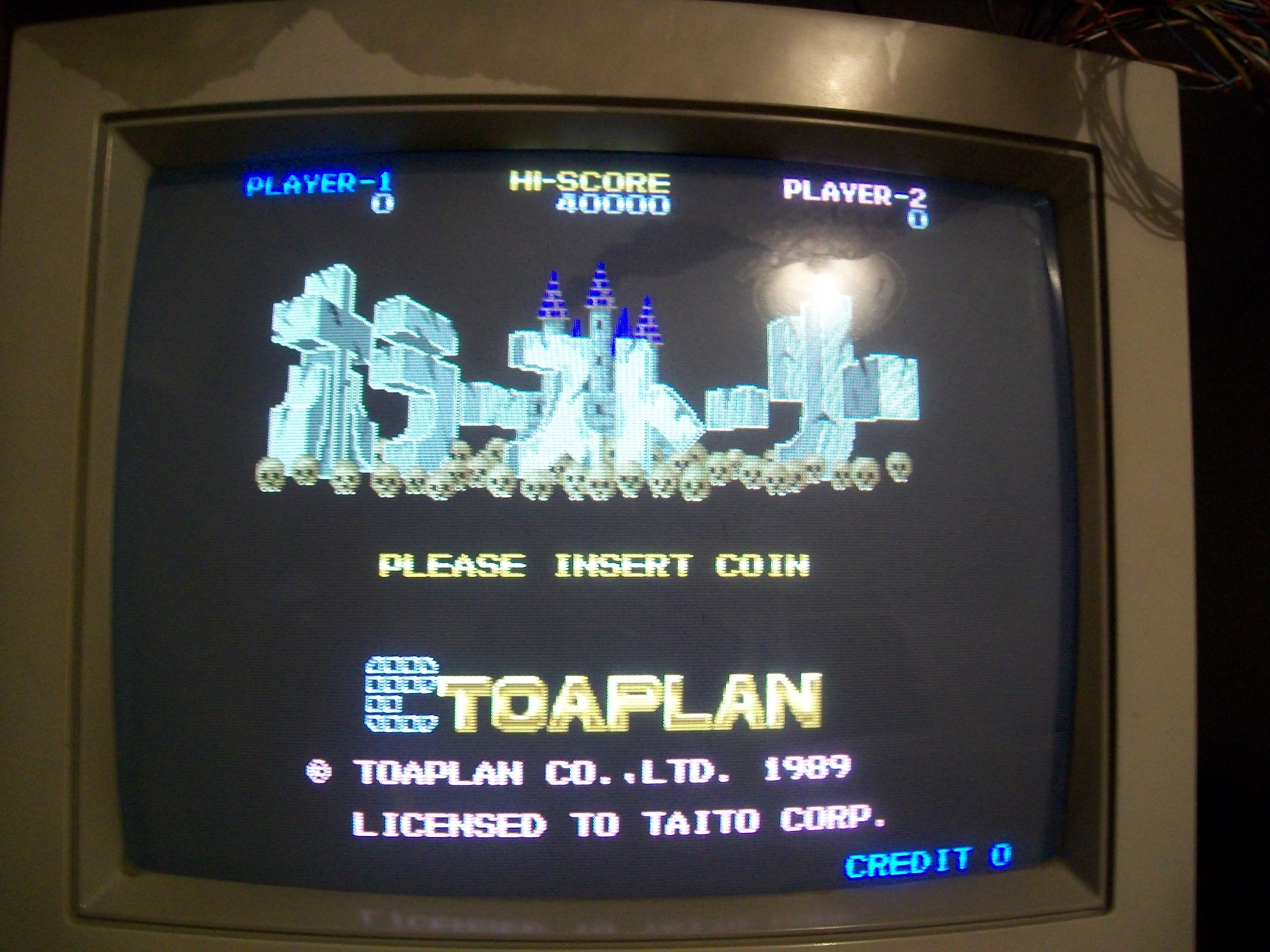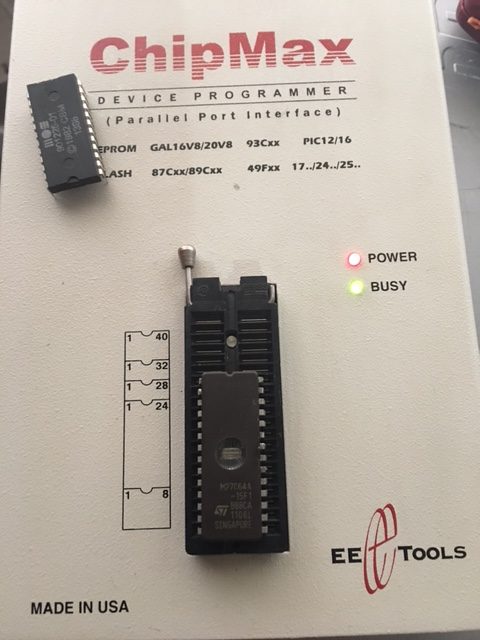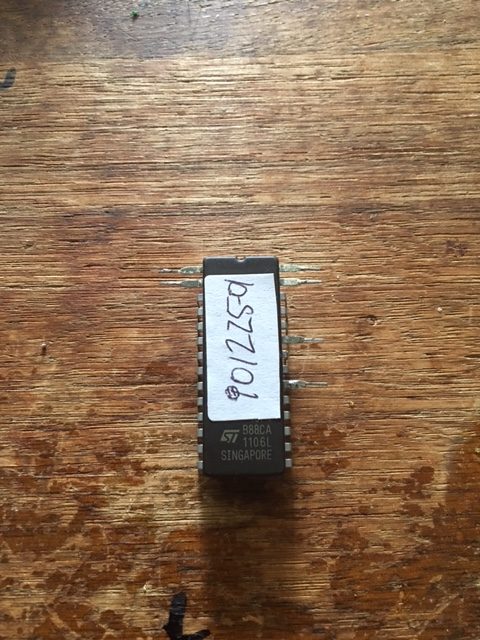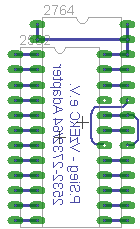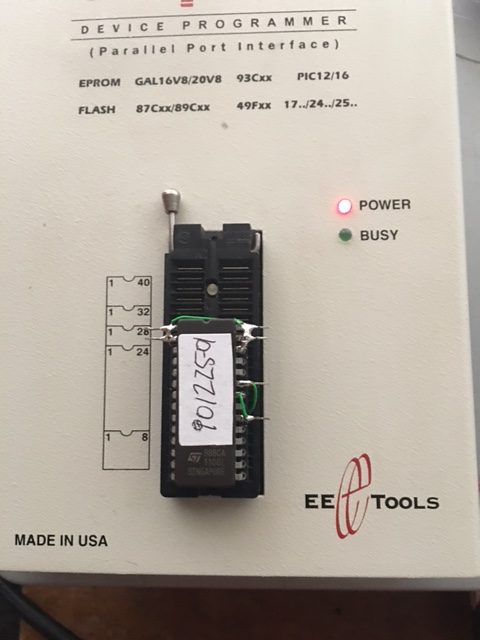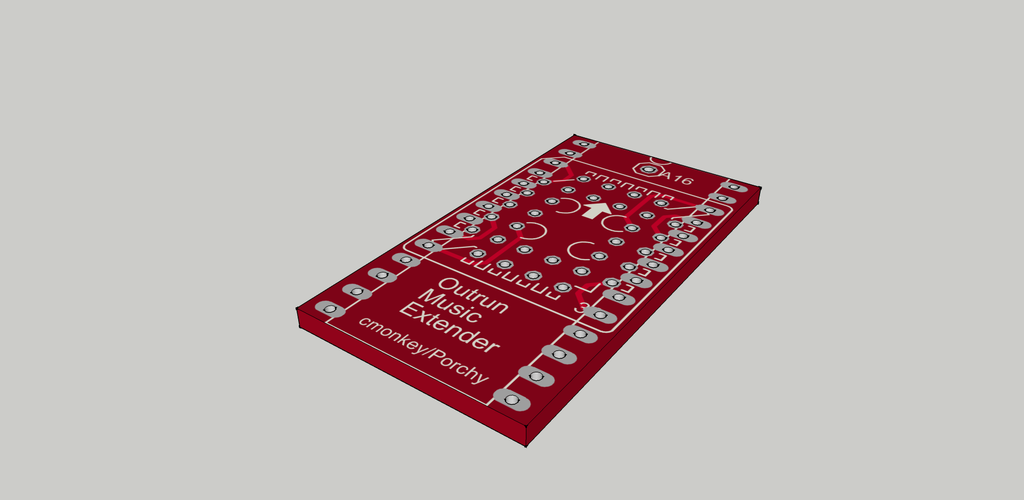This is part two of my C64 repair which documents the replacement of the bad character generator rom using a standard 27c64 EPROM. My local electronics hobby store did not have anything else on hand; I was hoping for a 27c32 because that’s what most folks on the internet seem to be using to get this repair done. I didn’t want to wait, so I settled on the 27c64.
The first step was downloading a c64 character rom ( 901225-01 ) with a checksum of $F7F8 from the internet. There are plenty of sources for these.
After downloading the 4kb binary I ran the following command under Windows to fill up the entire 8kb of address space of the 27c64 ( upper and lower 4kb have the same data ). I couldn’t quite remember which half I needed to burn the contents to so this was a quick and fail safe solution.
copy /b 901225-01.bin+901225-01.bin 901225-01-doubled.bin
I take the 8kb binary ( 901225-01-doubled.bin ) and burn the image to my 27c64 EPROM.

I bend the following pins outward on the 27c64 and cover the window with a sticker once the data is written.
1,2,20,23,27 & 28 ( bent out ).

I made an adapter using a machined pin socket. This is the diagram I used to re-wire the chip which I found on this German site.
https://forum.classic-computing.de/index.php?page=Thread&threadID=4694

2532 pin 18 -> 27c64 pin 23 ( A11 )
2532 pin 21 -> is not connected ( VPP )
27c64 pin 20 -> 27c64 pin 22 ( /CE & /OE tied )
27c64 pin 1,2,26,27 & 28 ( VPP,A12,NC,/PGM & VCC all tied ).
Once I finished wiring it was time to double check my work. I then select a 2532 device on Max Loader, load the original downloaded character generator rom into the buffer; this has a checksum of F7F8 which will be used for verification purposes.

With the wiring complete I’m now ready to verify it’s contents. I will read the device as a 2532 EPROM and if all goes well it should report a checksum of F7F8

With the re-worked EPROM inserted into the ChipMax I hit verify. F7F8 was what I was after.

With that result I was so confident it was going to work that I trimmed the protruding pins and inserted the device into the C64 to produce the results I expected.

